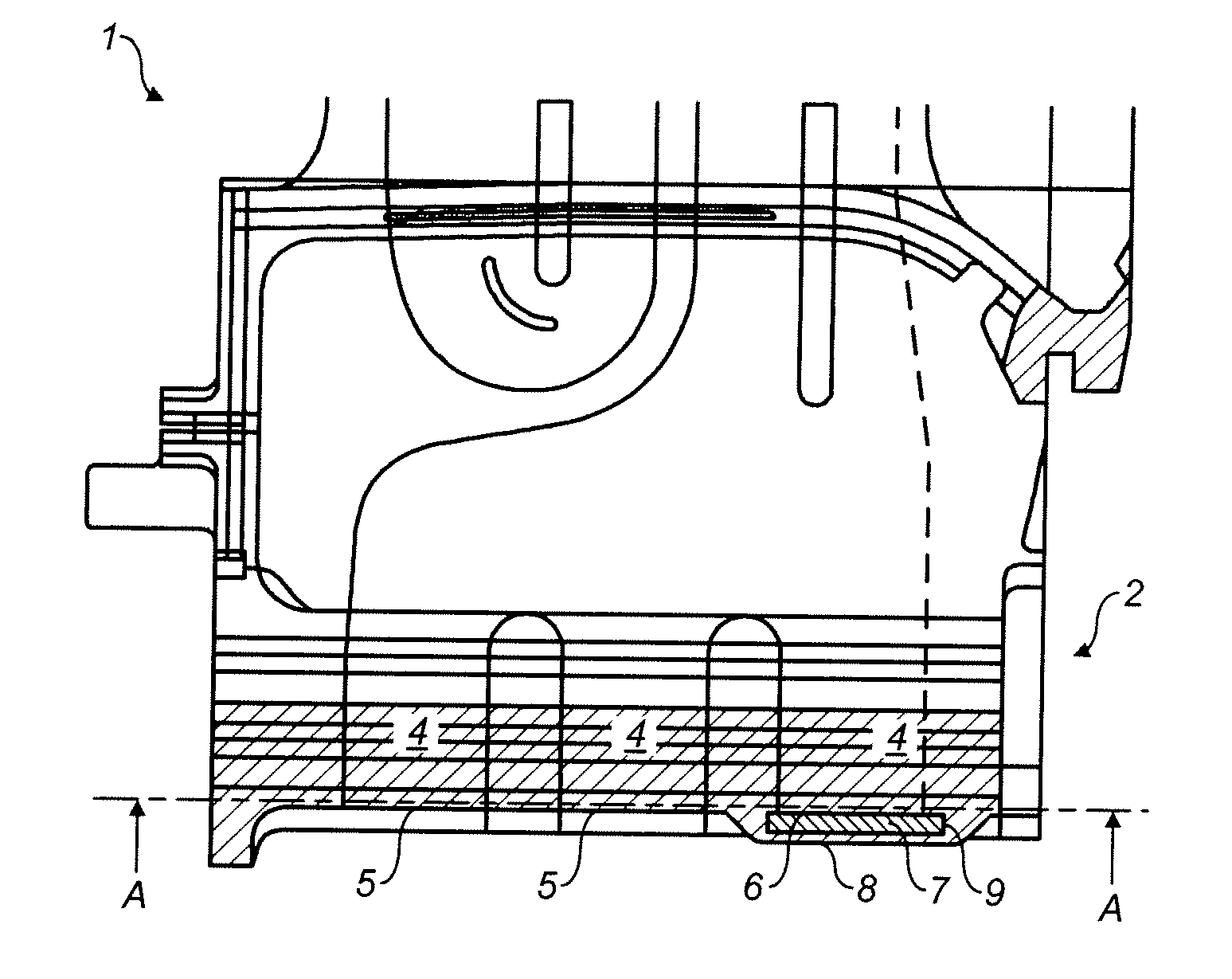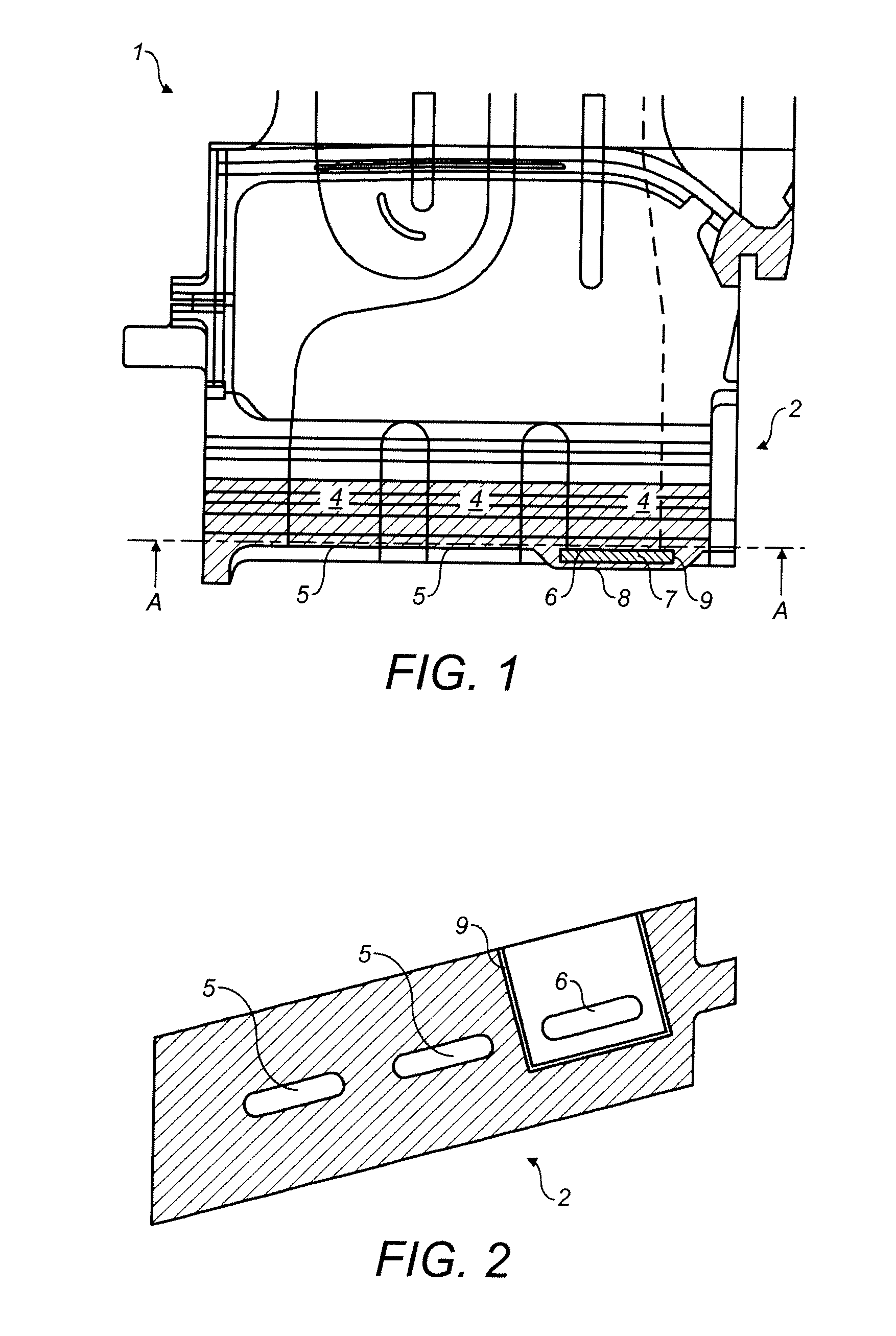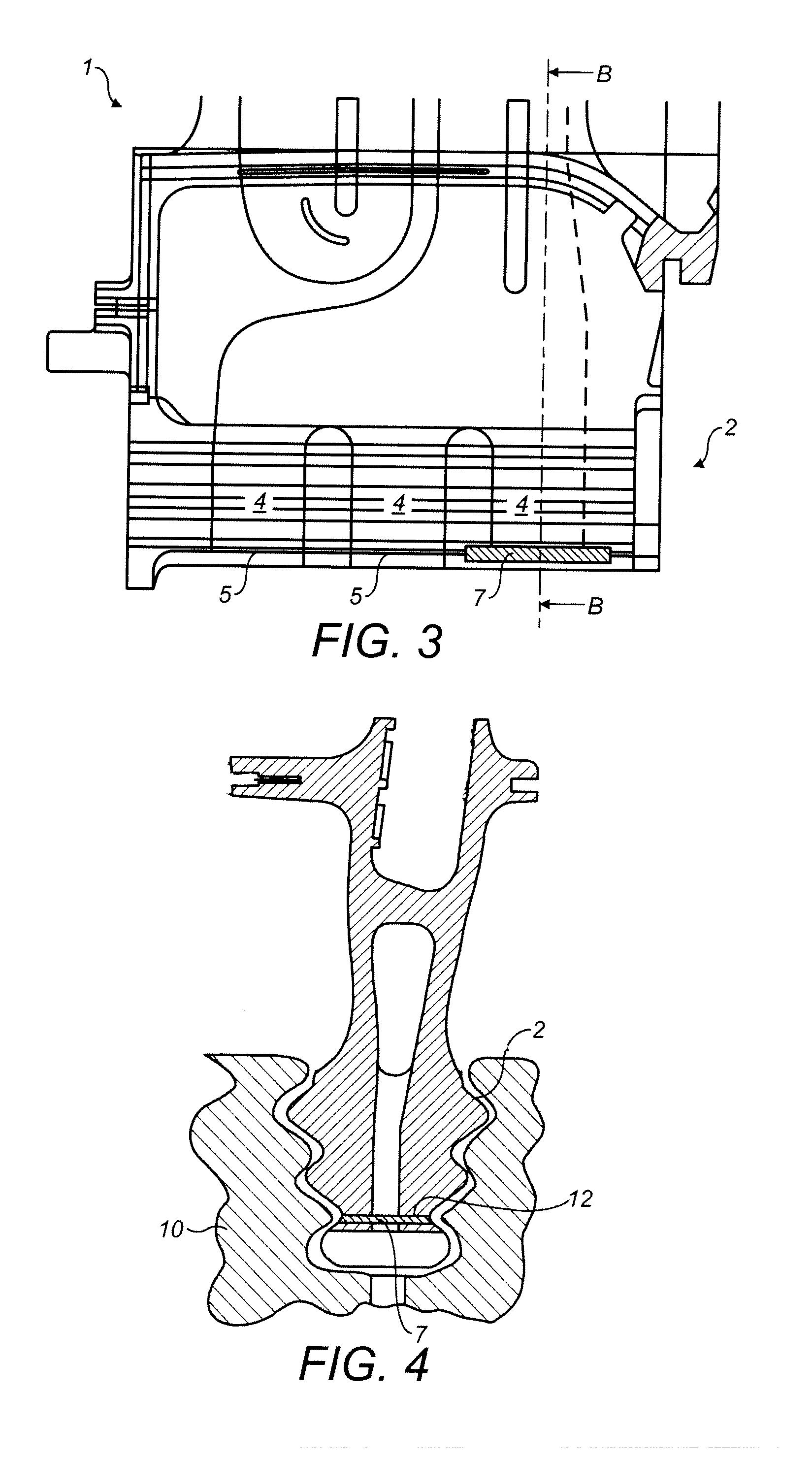Turbine blade
a turbine blade and blade technology, applied in the field of turbine blades, can solve the problems of inability to economically achieve subsequent welding and/or brazing, and difficulty in maintaining the separation of passages in the core,
- Summary
- Abstract
- Description
- Claims
- Application Information
AI Technical Summary
Benefits of technology
Problems solved by technology
Method used
Image
Examples
Embodiment Construction
[0030]Referring now to the drawings, wherein like reference numerals designate identical or corresponding parts throughout the several views. The drawings are for explanatory purposes only.
[0031]FIG. 1 shows partial spanwise cross-section of a turbine blade 1 of a gas turbine according to principles of the present invention. It extends from the root section 2 to the tip (not shown) and includes several internal passages 4. Further, FIG. 2 shows a cross sectional view of the turbine blade 1 along line A-A of FIG. 1. A passage 4 extends from the supply hole 5 for cooling air at the root 2 radially outward to the tip. Cooling air can exit through cooling slots (not shown). The hole 6 at the root 2 is closed off by a cover plate 7, which is removably secured to the root 2 of the turbine blade 1 by insertion into a slot 9 machined into added material at the root 2 of the blade 1. The slot 9 is furnished as a blind slot 9, as can be seen from FIG. 2, where the area of the blind slot 9 is ...
PUM
| Property | Measurement | Unit |
|---|---|---|
| thickness | aaaaa | aaaaa |
| thickness | aaaaa | aaaaa |
| heat resisting | aaaaa | aaaaa |
Abstract
Description
Claims
Application Information
 Login to View More
Login to View More - R&D
- Intellectual Property
- Life Sciences
- Materials
- Tech Scout
- Unparalleled Data Quality
- Higher Quality Content
- 60% Fewer Hallucinations
Browse by: Latest US Patents, China's latest patents, Technical Efficacy Thesaurus, Application Domain, Technology Topic, Popular Technical Reports.
© 2025 PatSnap. All rights reserved.Legal|Privacy policy|Modern Slavery Act Transparency Statement|Sitemap|About US| Contact US: help@patsnap.com



